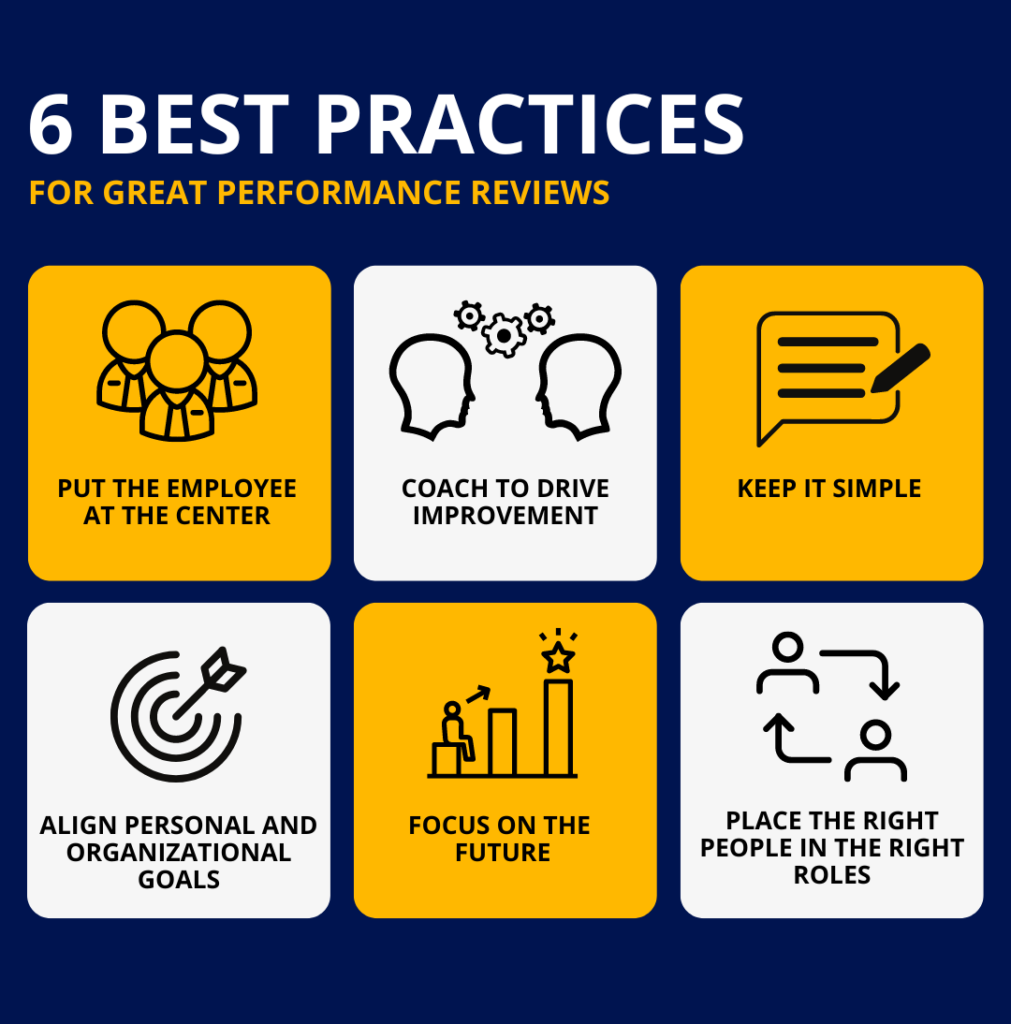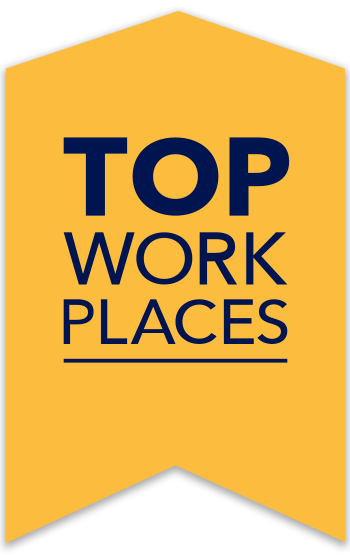Let’s be honest: no one looks forward to performance reviews. Only 4% of HR managers say their performance review methods are effective, and 83% say their systems need a total overhaul.
Those numbers are crazy — but it doesn’t have to be that way. When done right, employee performance reviews can empower and motivate everyone involved. Want to learn how to improve your strategy and get to that level? Keep reading to learn how!
What is a performance review?
A performance review is an evaluation of an employee’s individual skills, accomplishments, and impact. High performance cultures conduct regular performance reviews to ensure all teams and employees are working at peak performance.
At Energage, we use our own Catalytic Coaching tool for performance reviews. It’s a conversation-based method that encourages open dialogue and empowers managers to drive improvement. First, Energage employees submit their own performance analysis. Then, managers add input, ultimately documenting a unified performance review together, across three meetings.
Our employees believe this give-and-take review methodology is more personal and accurate — but it’s not the only successful method. Let’s take a closer look at other employee performance review methods and our top tips for nurturing a high-performing, people-first workplace culture.
Why performance reviews are important
Although the numbers can vary across industries, most studies report that over 90% of companies in the US use employee performance reviews. In high-performance, people-first cultures, employees are the number one resource and priority. Checking in to see how they’re working, how they can work better, and what they’re passionate about is crucial for high business performance. Plus, it excites people for what’s next.
According to Top Workplaces Research Lab data, 82% of employees say their managers help them grow. At the same time, 71% of employees want managers to discuss career development with them more often. This suggests that many companies and managers need to make their performance review methods more effective. Not just because it’s nice to chat with employees, but because they boost business performance.
More insights: Quiet Hiring and Employee Development
Which performance review method is the right choice?
Some companies still use formal, time-based performance review methods, while others have started to mix it up. Here are some popular options.
Time-based evaluations
Time-based evaluations are one of the most common types of job performance reviews. Earlier, we mentioned Energage’s annual performance reviews. Some companies choose quarterly, monthly, or even weekly evaluations – whatever cadence works best for your team.
Manager-led reviews
A lot of employee performance reviews are also led by managers. This method is beneficial when team leads have a good grasp on their employees’ projects and interests. In those instances, managers are the perfect people to analyze performance, offer guidance, and align goals.
Peer-based method
Who knows someone’s personality and performance levels better than their teammates? Asking peers to review each other offers a fresh approach and unique insights. Accompanied with feedback from management, peer-based review methods are a great way to incorporate different perspectives. And develop everyone’s ability to give and receive feedback.
360-degree feedback
360-degree feedback is a performance review method that uses feedback from everyone you interact with regularly — including customers and clients. This well-rounded perspective offers a holistic view of an individual’s performance and business impact. 360-degree feedback is great for companies in the sales and service industries.
Most common performance review challenges
Gary Markle, an expert in the world of coaching, wrote the bestselling book Catalytic Coaching: The End of the Performance Review. He says,
“Managers and employees have been grumbling about performance evaluations for forever. Their frustrations are real, and despite all of that — and all of this time — the complaints haven’t changed.”
According to Markle, these are the reasons why traditional performance reviews fail:
- Grading doesn’t work. These days, most organizations are focused on retaining great talent, not trimming heads.
- Wasting time on the wrong things reduces managers’ ability to have meaningful conversations about employees’ interests and the future.
- Getting stuck in the past hinders discussions about growth and progress, which are vital for effective performance reviews.
- Managers can be biased or subjective about specific subjects. Some are overly influenced by certain strengths and weaknesses.
- Too much competition during performance reviews can pin employees against each other, undermining teamwork and collaboration.
Best practices for great performance reviews
All great performance reviews have a few things in common. They’re usually focused on the future, empowering to employees, and time-sensitive for managers. Here are our 6 best practices:
- Put the employee at the center of the conversation to bring everything back to your main focus: managing performance.
- Coach to drive improvement. Use coaching skills to build relationships and motivate individuals.
- Keep it simple. If you have extra time, use it to learn more about your employees’ personal goals.
- Align personal and organizational goals to make both more achievable.
- Focus on the future, not the past. Celebrating progress and growth is much more effective.
- Place the right people in the right roles to identify future leaders sooner and unlock higher performance.

Gather feedback and celebrate performance with Top Workplaces
Top Workplaces awards celebrate high-performing, people-first cultures across the country. It is one of the only programs where one employee survey unlocks valuable employee feedback and 80+ recognition awards.
Looking to gather better employee feedback and celebrate employee growth? Nominate now to get the people-first recognition you deserve. Want to improve you performance review strategy? Go here for more info on Catalytic Coaching.

